/// A digital photographic exhibition
PRESERVING AND FEEDING THE PLANET
A LARGE-FORMAT LOOK AT THE LIVING WORLD
To mark its 40th anniversary, CIRAD invites you on
an exploratory voyage into the heart of the living world.
You will discover the variety of the research being done by CIRAD and its partners, aimed at preserving biodiversity and plant and animal health and building more sustainable, resilient food and farming systems.
Come with us on a tour of the tropical world, alongside the people working to feed the world of tomorrow.



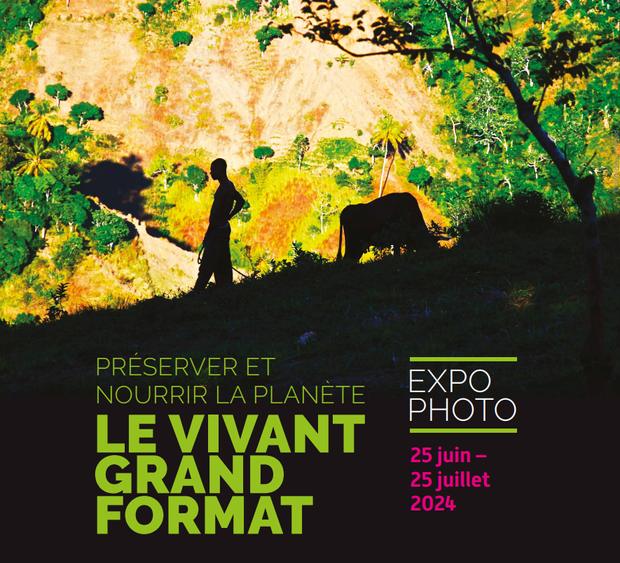
É. Malézieux, © CIRAD
01 /// Genetic diversity in the living world
Cracking plant and fish DNA codes
DNA is the building block for the living world, and contains the genetic information that determines and controls how all living organisms function.
CIRAD has coordinated or contributed to the sequencing and assembly of the genomes of several tropical plants, including cocoa, banana, sugarcane, coconut, vanilla, coffee and rice, and of freshwater
fish species such as Nile tilapia.
These reference sequences are now making it easier to identify genes of interest, to speed up the development of new varieties, or to trace the history of how certain crops were domesticated.
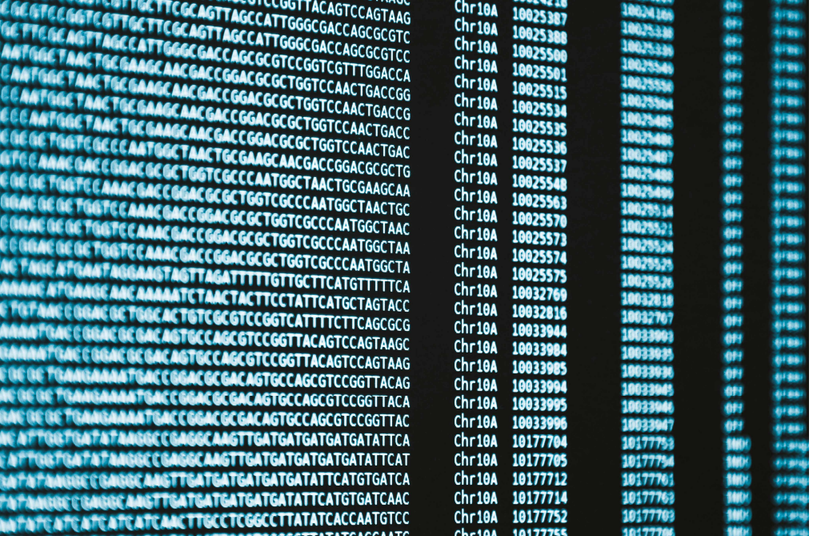
Genome sequence analysis of sugarcane cultivar R570© A. O’Shaughnessy/O. Garsmeur, CIRAD
02 /// Genetic diversity in the living world
Lifting the veil on plant anatomy
From individual cell to whole organ, plant tissue images serve to assess plant characteristics.
For instance, they helped to pinpoint the part of the vanilla pod in which vanillin (vanilla flavour) is produced.
This sorghum stem cross-section is from an image bank that lists more than 200 sorghum varieties, which has been used to identify the best varieties for producing energy, by methanization, or materials for the transport and construction sectors.
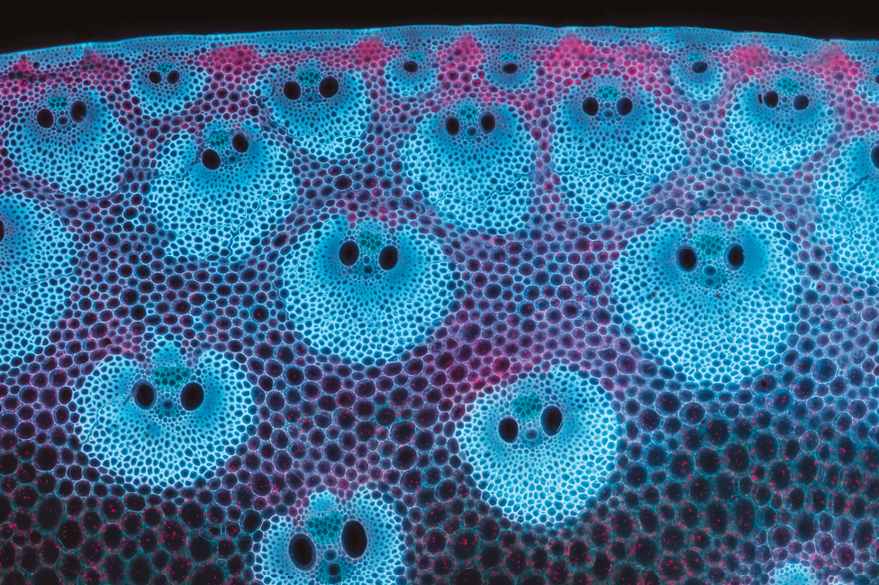
Sorghum stem © M. Lartaud, CIRAD
03 /// Genetic diversity in the living world
Closely guarded genetic resources
Biological resource centres in Montpellier and overseas hold seeds, in vitro cultures and plants in the field.
Thousands of samples from several dozen crop species are available to farmers’ organizations and for varietal breeding operations.
CIRAD and its partners have developed new varieties of several crops, including cotton, banana, rubber, coffee and rice.
This vast resource allows crop breeders to respond to climate hazards and crop pests and diseases., aux maladies ou ravageurs de plantes
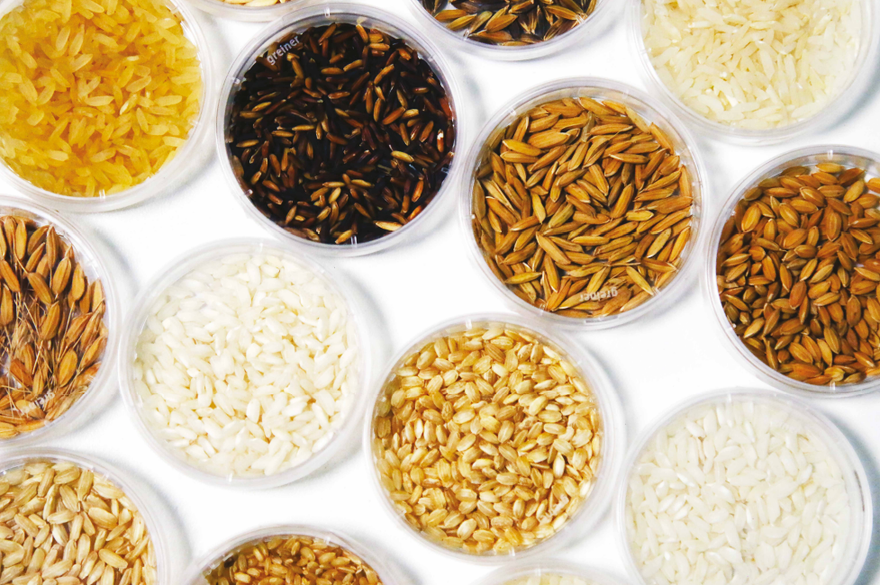
Different rice varieties © A. O’Shaughnessy, CIRAD
04 /// Genetic diversity in the living world
Pl@ntNet, the botanical app benefiting biodiversity
The natural world is home to a vast diversity of plants. One after another, botanists have sought to inventory this biodiversity.
In 2009, CIRAD, INRAE, IRD and INRIA, with the support of Agropolis Fondation, launched Pl@ntNet, a plant recognition app that now lists several thousand plant species and has millions of users across the world.
*Puya raimondii is the largest species in the family Bromeliaceae (which also includes pineapple): it grows up to five metres tall. A species in dangerof extinction, photographed by the Pl@ntNet team in Bolivia in 2015.
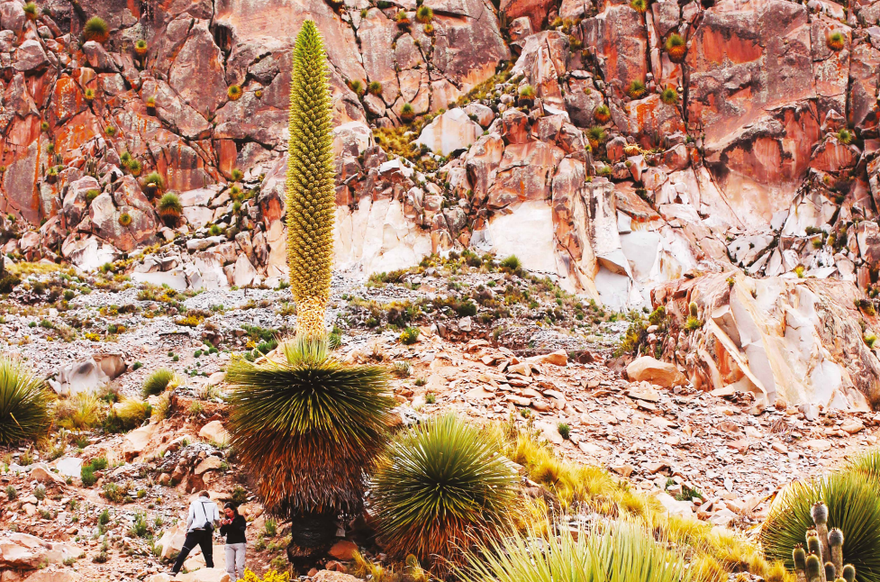
Puya raimondii, or Queen of the Andes* © P. Bonnet, CIRAD
05 /// Plant and insect biodiversity
Spiders, a largely unrecognized crop ally
Several species of spider are considered to be valuable assets for agriculture. They play an important role in controlling pest populations.
Knowing more about these beneficials makes it possible to encourage them in gardens or crops, and reduce the need for pesticides.
CIRAD has expertise in biological pest control, using predators, parasitoids or entomopathogenic fungi, and in Réunion, the plant protection platform is home to the La Coccinelle firm, which specializes in rearing beneficial insects.
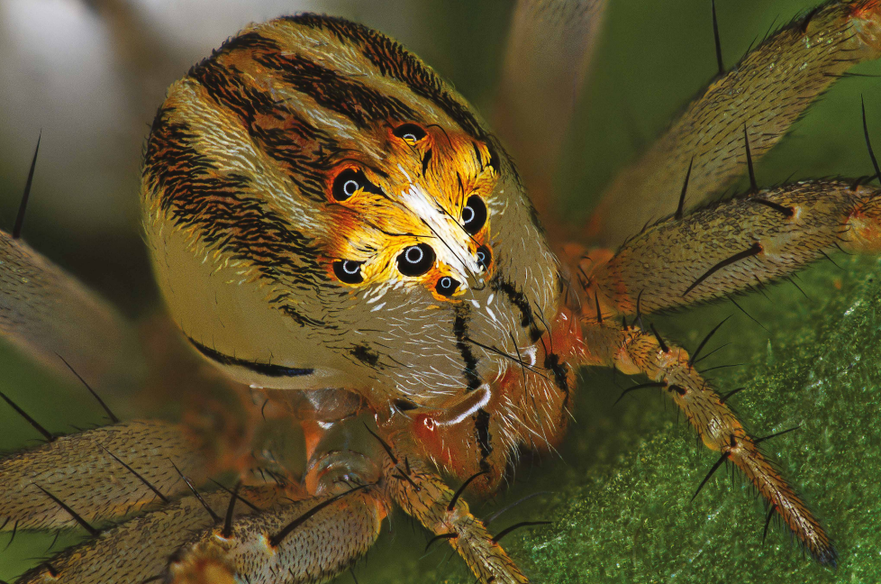
A Lynx spider (Oxyopes dumonti), Réunion Island © A. Franck, CIRAD
06 /// Plant and insect biodiversity
Locusts, a deadly enemy of plants
In the event of an outbreak, locusts can rapidly devastate ecosystems, affecting both biodiversity and crops.
CIRAD has researched the ecology and biology of locusts to understand their life cycle and how they interact with plants.
It has helped develop early warning systems and backed preventive control approaches that considerably reduce the frequency of outbreaks.
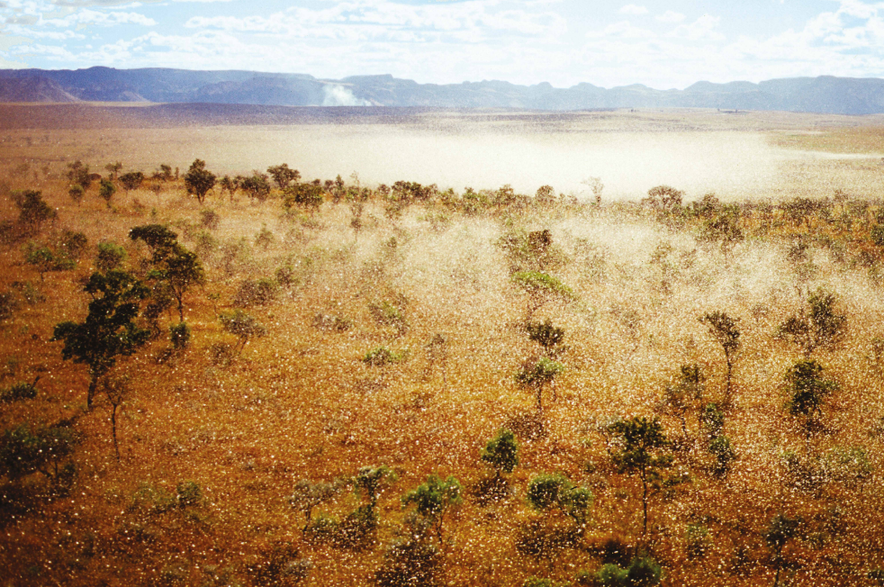
Cloud of migratory locusts (Locusta migratoria) in Madagascar during an invasion in 1997-1999
© F. Lecoq, CIRAD
07 /// Trees, forests and tropical woods
The baobab, the tree of life
The baobab is recognizable by its huge trunk, which can store large quantities of water. This is one of its many advantages, and prompted its nickname: the tree of life.
Six of the eight baobab species are endemic to Madagascar, and some are in danger.
In the hope of conserving this unique biological heritage, CIRAD and its partners in the country are working to understand the place occupied by baobabs within ecosystems, and to assess their susceptibility to climate change.
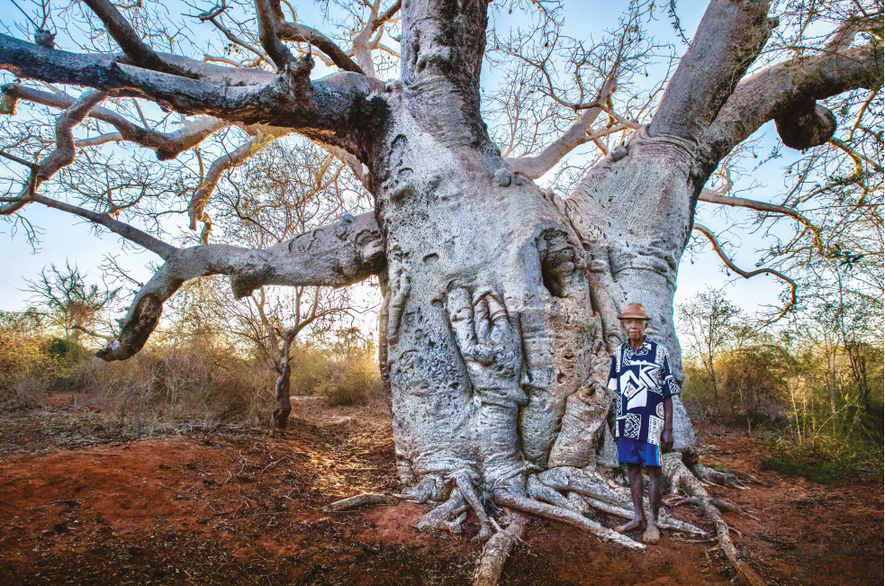
Adansonia za, the most common baobab in Madagascar, grows to a height of between 5 and 20 metres and is often used as a water tank © C. Cornu, CIRAD
08 /// Trees, forests and tropical woods
Tropical forests, the ecosystem with the most biodiversity
Tropical forests have the most biodiversity of all the planet’s ecosystems, but are also among the most threatened.
CIRAD is working to develop sustainable forest management methods that reconcile forest resource use, biodiversity conservation and respect for the rights of local communities.
*Shot with a drone fitted with an infrared multispectral sensor, to locate trees
of the same species prior to logging.
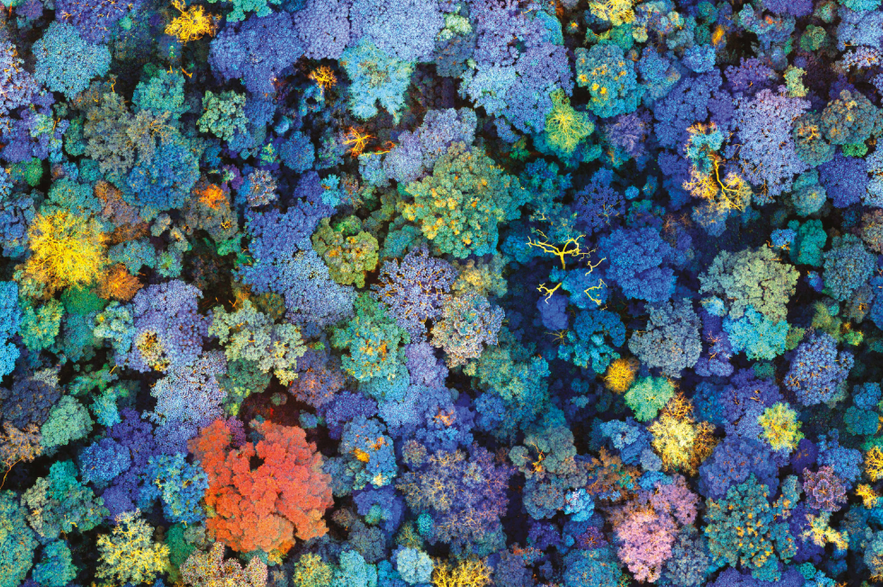
Aerial view of a forestry concession in northern Congo* © V. Gond, Cirad
09 /// Trees, forests and tropical woods
Wood, many species, many uses
Wood has many uses, including construction, furniture, paper, and energy. CIRAD has a xylotheque with 35 000 samples of 8400 tropical and temperate wood species.
This reference collection can be used to identify woods on a macroscopic or microscopic scale.
Observations under a microscope serve to describe and understand the structure of woods, to pinpoint their quality and properties.
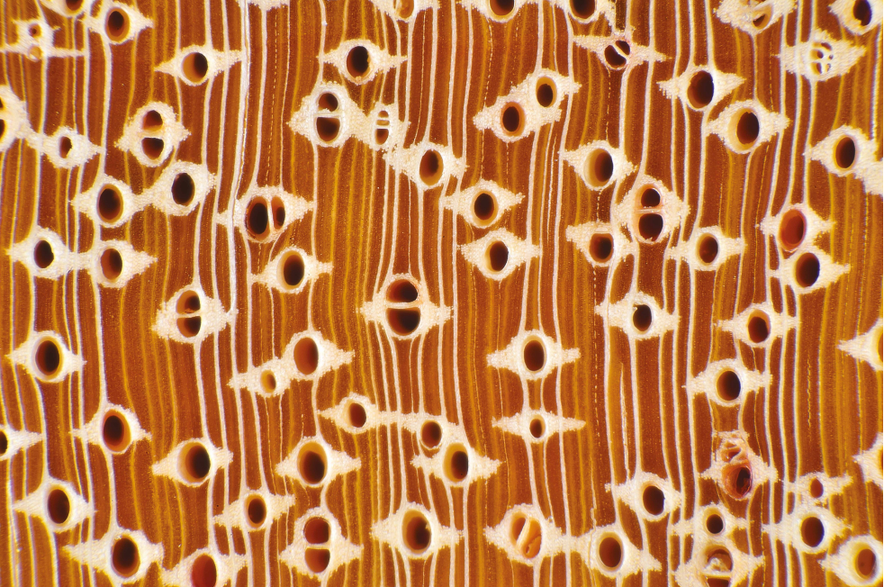
Cross-section of Koompassia malaccensis wood, a species from Southeast Asia primarily used in carpentry © J-C. Cerre, Cirad
10 /// Wildlife and One Health
Reconciling people’s needs and wildlife conservation
In many parts of the global South, wildlife is still a source of both protein and income for rural communities.
As part of the SWM programme, CIRAD is helping Ghana to conserve its wildlife resource, by means of appropriate legislation, while satisfying local people’s needs.
Sustainable practices or alternatives to hunting, such as poultry or edible oil palm weevil larvae rearing, are also being developed.
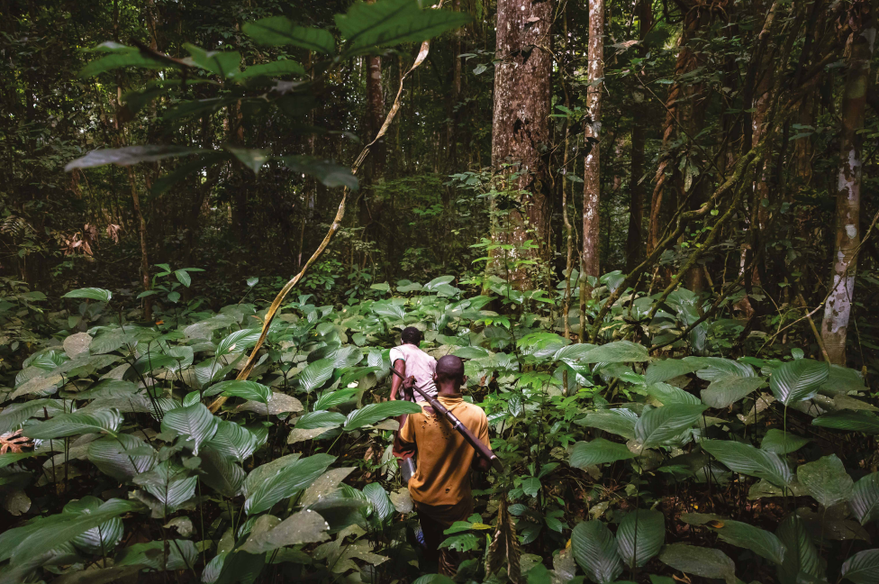
Hunters in a forest in Gabon, on the lookout for antelopes and porcupines
© Brent Stirton, Getty Images pour FAO, Cifor, CIRAD, WCS
11 /// Wildlife and One Health
The African buffalo, at the heart of conservation and health issues
The buffalo is an emblem of the wildlife of sub-Saharan Africa, and population levels are stable across the continent. In those areas such as southern Africa, where the species has been particularly well conserved, it offers economic opportunities thanks to hunting, tourism and extensive farming.
CIRAD is working to develop sustainable management strategies, include the buffalo in sustainable production systems and manage the risk of disease transmission between buffaloes and livestock or humans
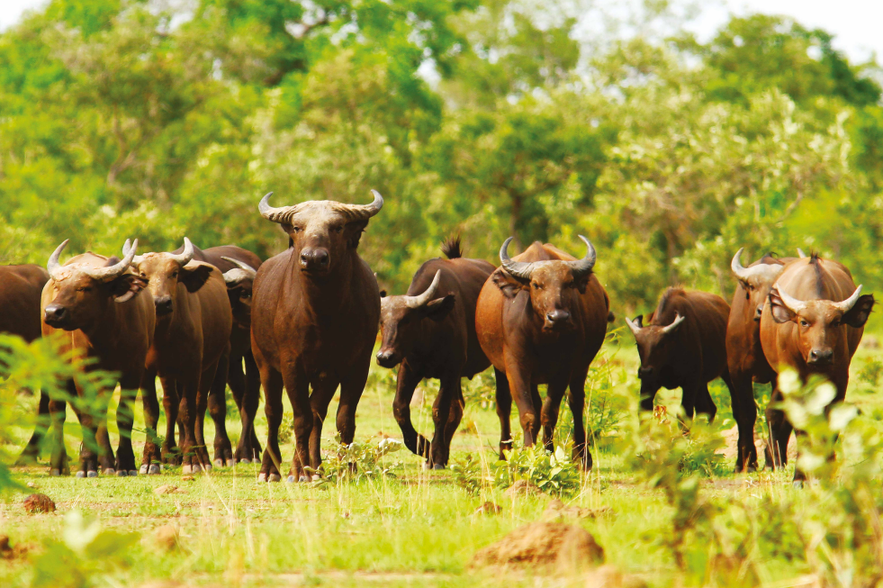
Savannah buffaloes, a sub-species of African buffalo, in Niger © D. Cornelis, CIRAD
12 /// Wildlife and One Health
Epidemiological surveillance, to understand and control emerging diseases
Epidemiological surveillance networks associating scientists, health professionals and livestock farmers, hunters and crop farmers have been set up to study viruses, bacteria and other plant, animal and human pathogens.
One of the aims is to monitor pathogen circulation and be in a position to take rapid action in the event of disease emergence.
These operations are part of a One Health approach, which recognizes that human, animal and plant health are interdependent and also linked to ecosystem health.
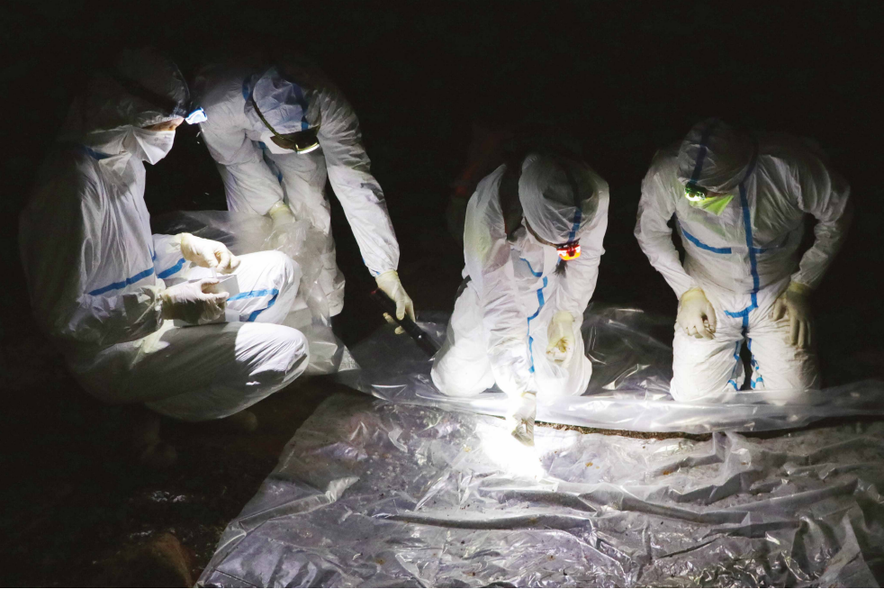
Sampling cave bat guano in Zimbabwe to study coronaviruses © A. Jimu pour IRD et CiRAD
13 /// Environment and agriculture
Water, a resource to be shared
Water is essential for all forms of life, but is scarce in arid zones such as North Africa or the Sahel.
CIRAD is helping local people and policymakers manage the resource sustainably, by means of participatory approaches.
In Tunisia, for instance, the PACTE programme has collected 11 500 action proposals from 4300 people.
Watershed management methods, hydraulic structures, etc, are being designed within the framework of development plans, hand-in-hand with citizen representatives and experts.
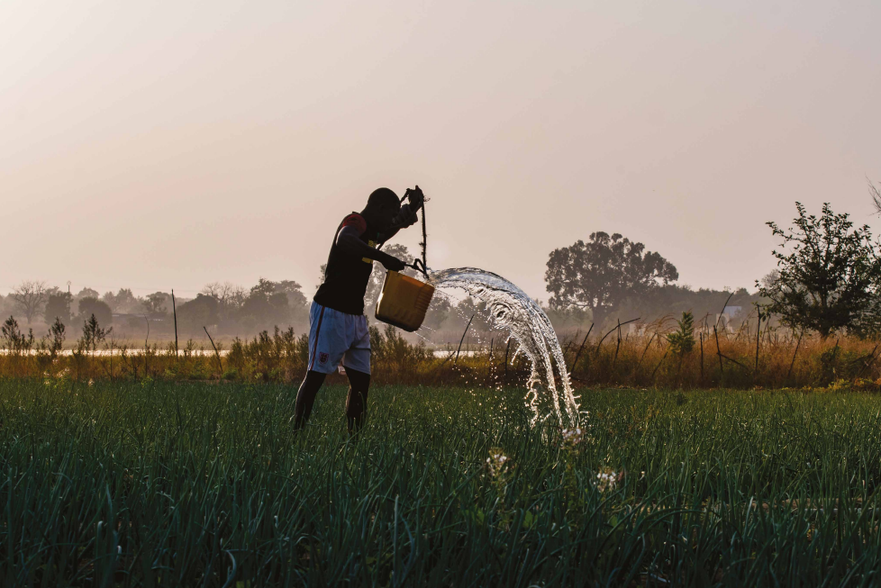
In the Sahel, climate change is threatening water reserves © A-L. Mimault, CIRAD
14 /// Environment and agriculture
Healthy soils are fertile soils
Soils are an ecosystem made up of minerals, organic matter, water, air and living organisms.
Their fertility is determined by their organic matter content (carbon) and mineral levels, and by the intensity of their biological life.
CIRAD has laboratories that can analyse soil fertility and carbon storage capacity, to adapt crops and cropping practices.
Soil contaminants can also be analysed, to avoid pollution.
*CARPAGG – carbon and greenhouse gases from grasslands in French Guiana.
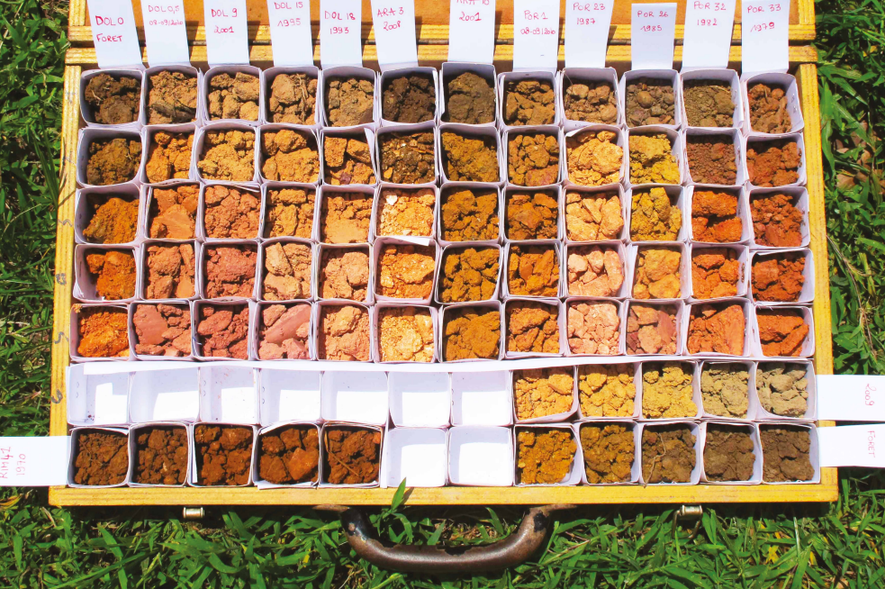
Device to compare soils collected as part of the CARPAGG* initiative © V. Blanfort, Cirad
15 /// Environment and agriculture
When farming helps the environment
Agriculture puts pressure on natural resources, be they water, soils or forests.
CIRAD is working with value chains and the authorities in the tropics to improve farming practices and reduce the impact of agriculture on the environment, and, better still, to make it an environmental asset.
In Paragominas, in the Brazilian Amazon, for instance, not only is agriculture no longer causing any deforestation and livestock farming only a small amount, they are restoring degraded soils in some areas and helping to reforest them.
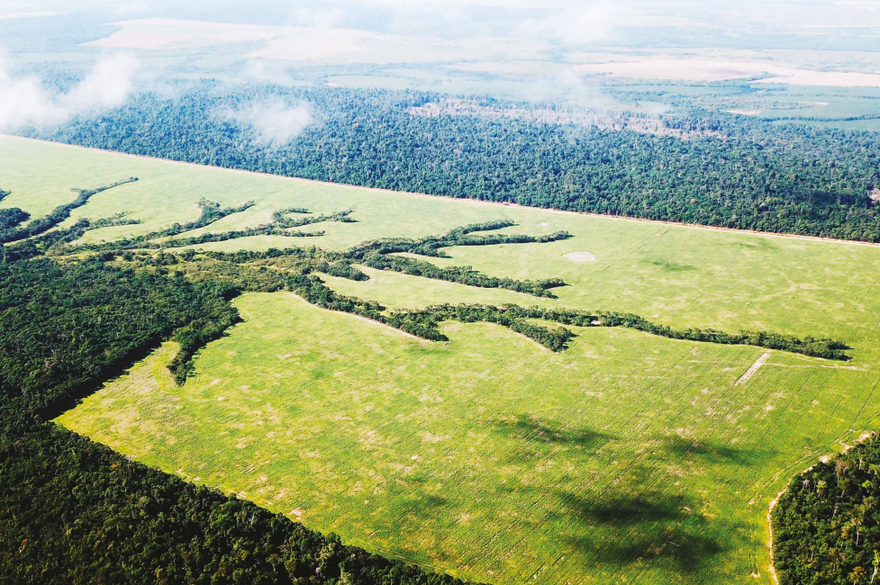
Riverside vegetation along water courses on restored grazing land in Paragominas (Brazil) © R. Poccard-Chapuis, Cirad
16 /// Agricultural production: a choice of virtuous models
Trees in fields
Agroforestry, which combines trees with crops or livestock, is one way of reforesting the planet, capturing carbon and helping agriculture cope with climate change.
CIRAD is studying and helping to develop cocoa-, coffee-, bananaand millet-based agroforestry systems, amongst others.
Alongside the main crop, the trees generate additional resources for farmers: wood, fruit, fodder, etc.

Under Faidherbia albida trees, farmers in Senegal are growing millet and groundnut in rotation, in addition to rearing livestock © C. Dangléant, CIRAD
17 /// Agricultural production: a choice of virtuous models
Can we make livestock farming green?
Livestock farming often comes under scrutiny because of its greenhouse gas emissions and the deforestation it causes in the Amazon.
CIRAD is working with farmers in the region to improve their practices, with financial support such as the “Pecuária Verde” (green husbandry) loan.
This experiment, headed by CIRAD and EMBRAPA, is helping to boost productivity on smaller areas, thus fostering the return of forests.
*Rotational grazing is a technique that cuts methane emissions from cows and boosts carbon capture by the soil.
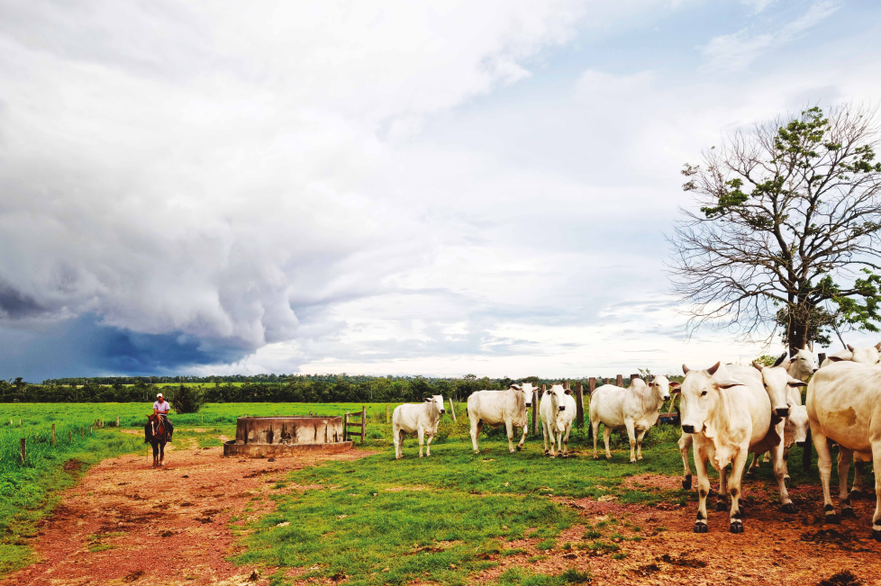
On this farm in Brazil, the farmer practises rotational grazing* © R. Poccard-Chapuis, Cirad
18 /// Agricultural production: a choice of virtuous models
Covering the soil and combining crops
Agroecology consists in applying ecological processes to agriculture to build sustainable production systems.
Using plant cover to protect and nourish the soil, intercropping and crop rotation with legume crops,
organic matter recycling, and plants, insects or animals that benefit crops, rather than chemical inputs, are some of the key principles.
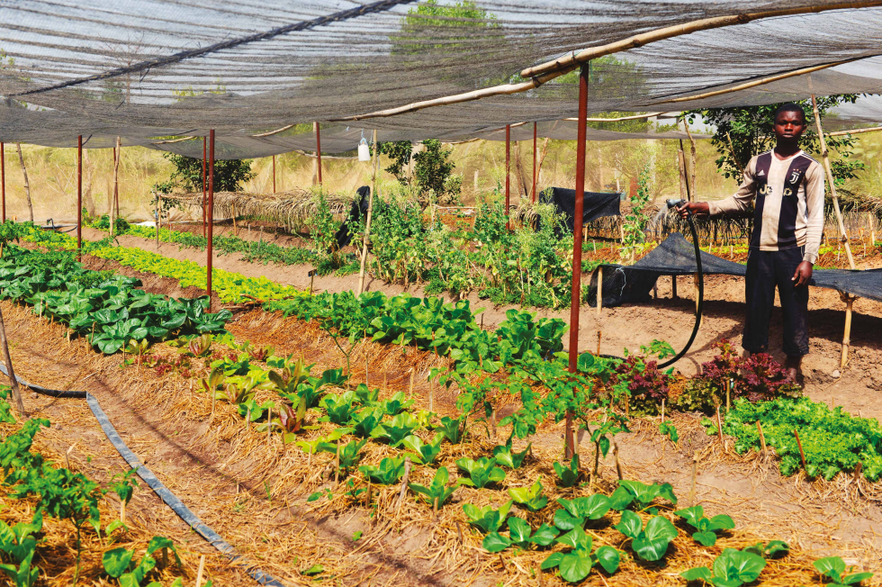
This Ivorian farmer has covered his soil with mulch and grows various vegetables under shade, to lower the temperature © T. Martin, Cirad
19 /// Agricultural products: from harvest to market
Mango crops: reducing losses
Most of the mangoes produced worldwide are “lost” before consumers have a chance to taste them.
In Africa, losses are caused by pests such as oriental fruit flies, and by poor harvesting and postharvest conditions.
CIRAD is working to develop biological fruit fly control and help the value chain manage harvesting and logistical circuits more efficiently.
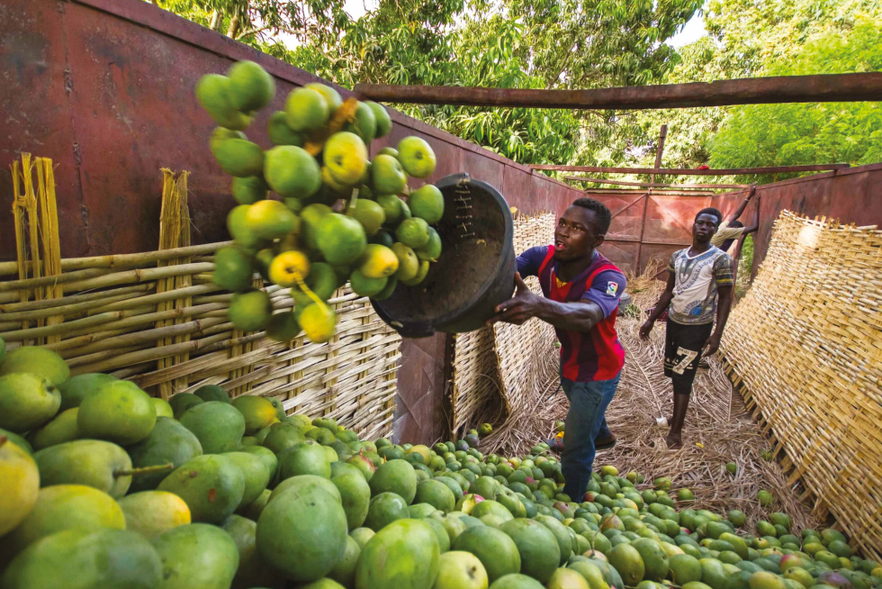
Losses and wastage when transporting mangoes for the local market in Senegal © R. Belmin, Cirad
20 /// Agricultural products: from harvest to market
Milk collection: creating mini-dairies
In the Sahel, several tens of millions of families produce milk but less than 5% of what they produce is processed by dairies.
There are several reasons for this: farms are isolated, production is seasonal and insufficient, and collection systems are not truly efficient.
CIRAD has helped set up innovative collection and production systems, including mini-dairies, in Senegal, Mali, Mauritania and Burkina Faso.
*According to who owns the cattle and to the rights of herders. Some of the milk may be sold to dairies, some made into cheese or sold as curds or butter, and the remainder consumed by the family.
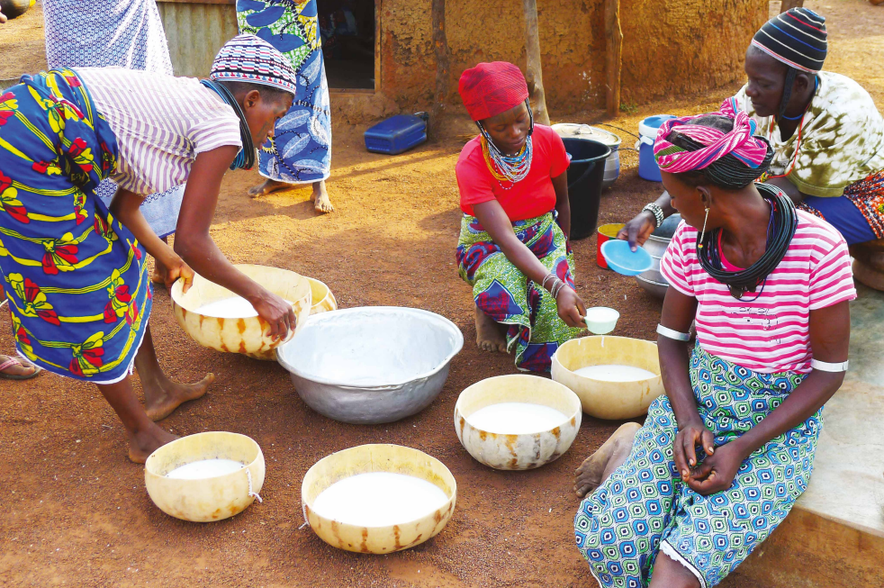
After milking, women in Benin share out the milk* © G. Duteurtre, Cirad
21 /// Agricultural products: from harvest to market
Market sales
In Southeast Asia, three quarters of fresh food is sold on so-called “traditional” markets.
CIRAD has demonstrated the necessity of maintaining such markets, since they satisfy demand from consumers in terms of freshness and are capable of sustaining a lively local economy that links urban and rural areas.
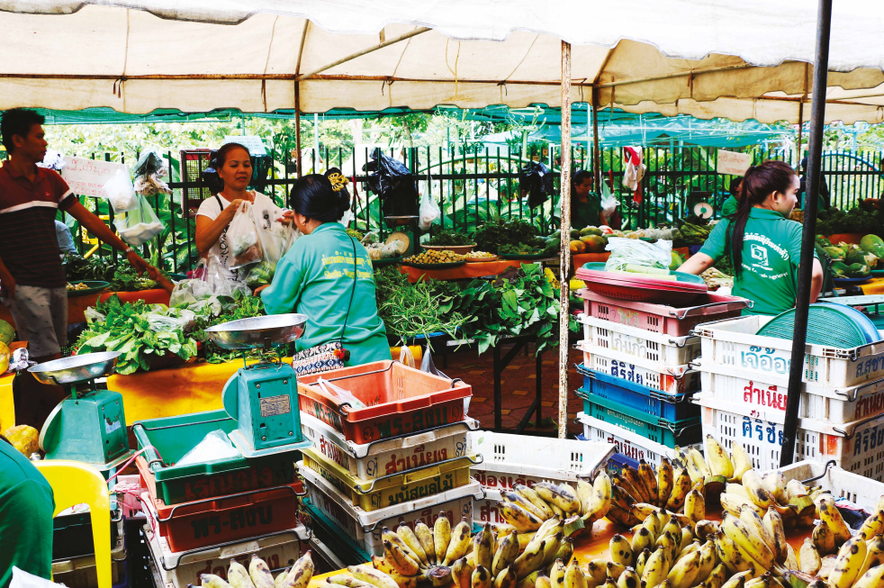
In Laos, there is growing demand for quality agroecologically or organically produced products © I. Vagneron, Cirad
22 /// Agricultural product processing and recycling
Geographical indications: a quality product linked to a territory
Geographical indications (GIs) recognize products whose quality, reputation or characteristics are linked to their territory of origin.
There are 9000 GIs worldwide, including more than 3000 in Asia.
CIRAD has supported many of those applications. In Indonesia,the creation of an initial GI for «Kintamani-Bali» coffee led to that of 130 others, including 48 for coffee, a third of the coffee GIs in the world.
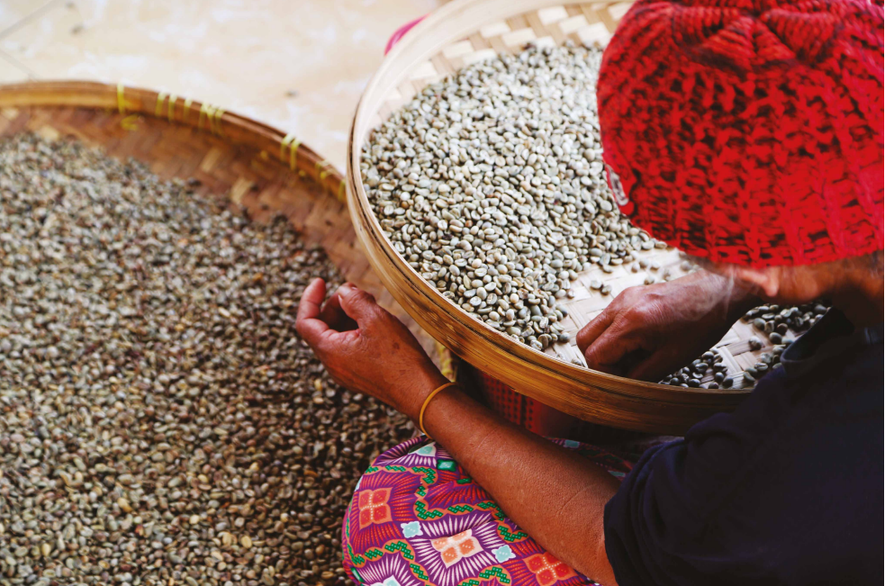
Hand sorting Arabica coffee beans (Kintamani, Bali, Indonesia) © A. Rival, Cirad
23 /// Agricultural product processing and recycling
Women play a key role in food and nutrition security
There is a paradox in some parts of West Africa: agricultural production is high yet child malnutrition is rife.
In Burkina Faso, CIRAD has demonstrated that access to natural resources, income, and time for mothers is a better guarantee of the quality of the food they give their families than the level of agricultural production.
Women also play a key role in processing food and in running agrifood businesses
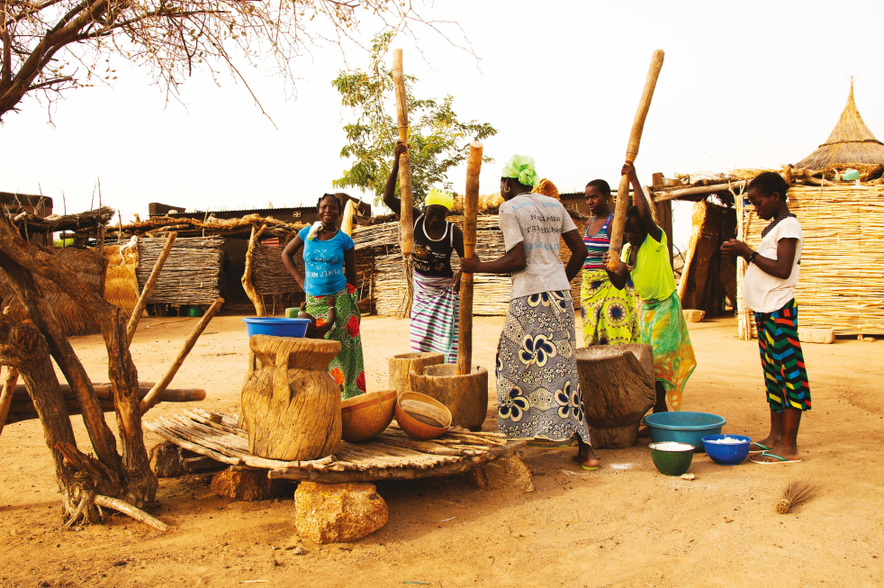
Women in Burkina Faso guarantee the quality of the food their family eats © A-L. Mimault, Cirad
24 /// Agricultural product processing and recycling
Turning agrifood industry biowaste into energy
The BioStar project aims to work with agrifood SMEs in West Africa to produce bioenergy from the organic waste they generate.
Five target value chains have been pinpointed: cashew nuts, groundnuts, shea nuts, mangoes and rice. Bioenergy production units are being designed and developed in Senegal and Burkina Faso.
*Heated by burning cashew nut shells (Senegal).
This equipment makes cashew nuts easier to shell
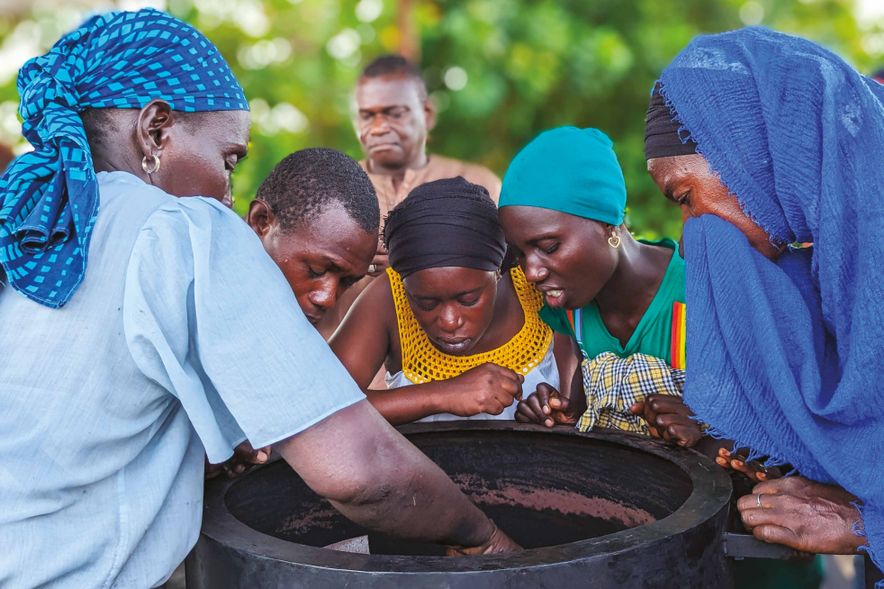
Tests to validate a prototype steamer (Senegal)* © T. Ferré, Cirad
25 /// Sustainable territorial development
Analysing changes in use and unequal access to land
Territories in the global South evolve rapidly and land use is constantly changing, from forest to farmland and from farmland to urban areas. This may also mean changes in land ownership. CIRAD and its partners produce maps and conduct field studies, to analyse both land use changes and inequalities in terms of access to land.
*In the Madagascan capital, agriculture on the plains liable to flooding in the city centre is shrinking
due to the number of new buildings (agriculture in red, flooded zones or marshes in black).
However, it is expanding in periurban zones.
Data compiled by the DINAMIS platform, funded by CNES, CNRS, IGN, IRD, INRAE and CIRAD
Author S. Dupuy, using Pléiades satellite images
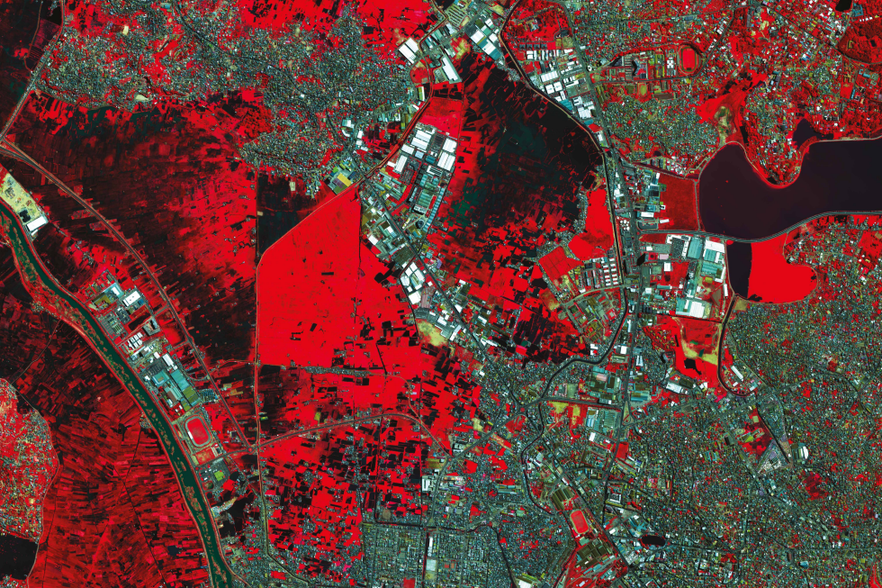
Agricultural plots (in red) on plains liable to flooding in the centre of Antananarivo (Madagascar)* © CNES 2022, distribution/distributed by AIRBUS DS
26/// Sustainable territorial development
Playing games to build tomorrow’s solutions and territories
Participatory approaches – co-construction workshops, living-labs, games, interactive computer simulations, and so on – are crucial for fostering solutions and involving people in managing both resources and territories.
CIRAD has developed around fifty serious games (card games, roleplay, board games) centring on numerous fields (water, biodiversity, forests, land tenure, agroecology, pastoralism, the energy transition, One Health).
*TerriStories®, a game to build collective natural resource and value chain management rules,
prevent and resolve conflicts, etc.
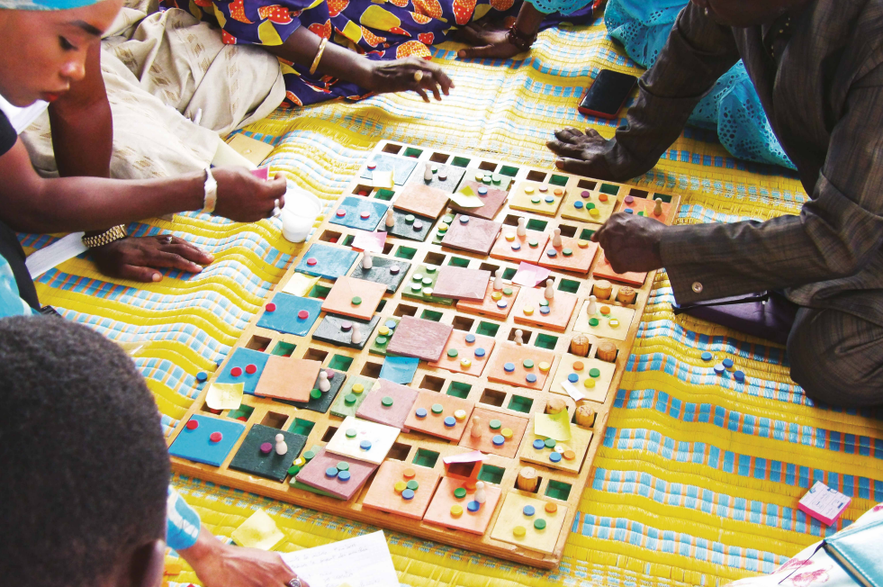
TerriStories®, a game to build collective rules* © E. Darbois
27 /// Sustainable territorial development
Public policy can support change
How can solutions built on a territory scale be shared and rolled out more widely?
CIRAD’s research results fuel debate to build policies that will foster a fairer, more sustainable world, in which farmers are able to make a decent living, while protecting the environment.
The JobAgri project, to quote just one example, is supporting policymaking to create decent jobs in the food sector.
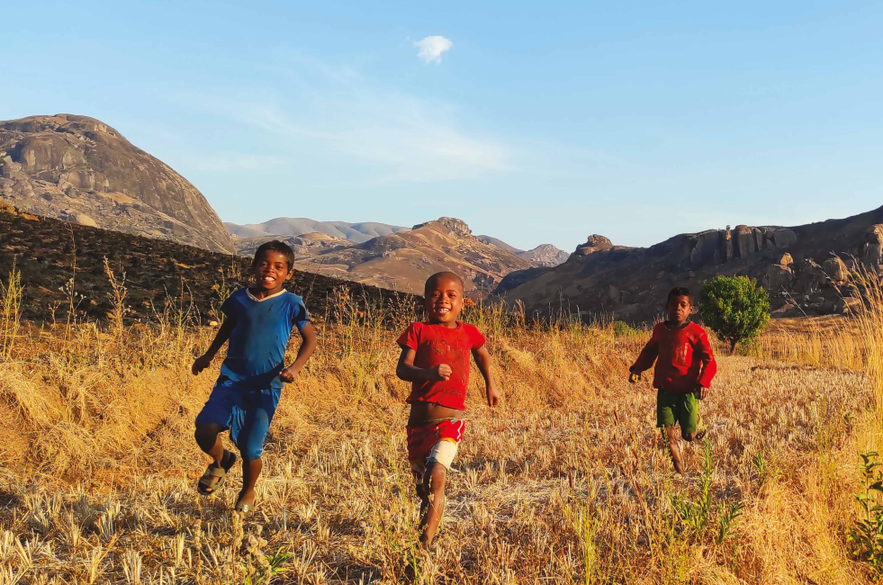
In Africa, the continent with the youngest population, agriculture is a pool of potential jobs © P. Burnod, Cirad
/// Find out more
01 /// Success tastes sweet | Sugarcane's complex genetic code has been cracked
02 /// Using imaging to speed up crop innovation
04 /// Half of all plants have never been photographed in the wild
05 /// Les amis de nos jardins : reconnaître et préserver les auxiliaires de jardins
06/// Gestion préventive du criquet pèlerin : des crises humanitaires évitées
10 /// A balancing act between wildlife conservation and food security
11 /// The buffalo, an emblem of sub-Saharan Africa, is the star of a new book
12 /// « Plantes, animaux, humains : nos santés en commun » : la saison 4 du podcast du Cirad
17/// The Amazon: loans to fund virtuous livestock farming and preserve the forest
18/// Un guide pour évaluer l’agroécologie et ses conditions de développement
20 /// CIRAD is supporting the development of dairy farming in the Sahel
/// Find out more
Design and production
CIRAD Communications Office,
with the contribution of Cirad'Innov®
Photos
Ciradimages, CIRAD scientists
and partner photographers
This exhibition has been designed as part of
CIRAD's 40th anniversary celebrations in 2024,
presented at the Jardin des Plantes in Montpellier
and then in several CIRAD's regional offices abroad.



